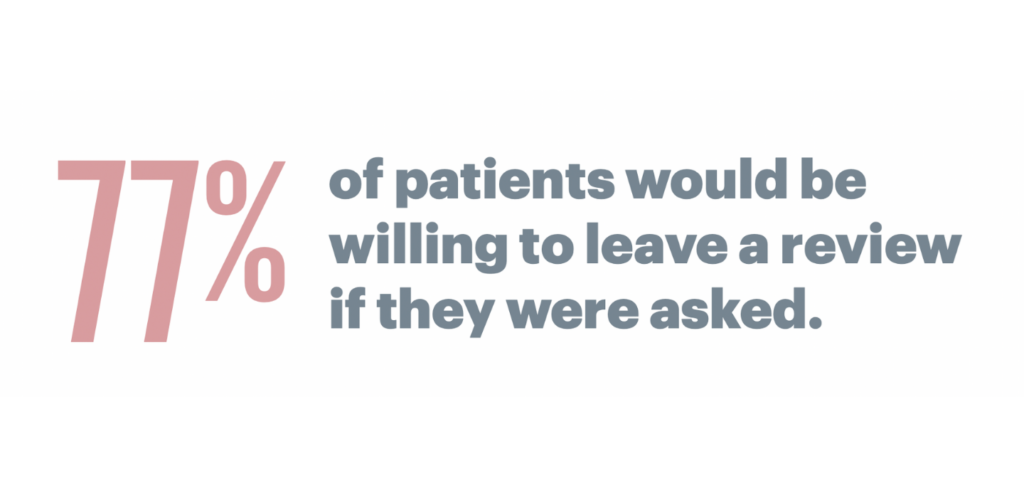5 Tips to Dominate the Local Healthcare Search
While most companies will have at least some local search strategies in place, healthcare businesses would do well to place more weight on them. After all, most healthcare clients are local and receive in-person care. Even if you provide a few telehealth services, you will likely have more established local clients. As such, your primary focus in all of your marketing campaigns should be local search.
The following tips will help you optimize your Google Business Profile and dominate the local results.
1. Claim Your Google Business Profile
The first thing you want to do is claim your Google Business Profile (if you haven’t already done so). As a reminder, Google Business Profile used to be called Google My Business. So, if you already have a Google My Business listing, you’ve already done this step.
How to Claim Your Google Business Profile
The process of claiming your Google Business Profile is incredibly straightforward. Just do the following:
- Visit business.google.com.
- Look for your healthcare business with your address and/or name.
- Fill out the basic information for your practice.
- Submit the information.
- Check your mail with a postcard containing a PIN. This is part of the verification process.
Once you have officially claimed your listing, it is time to start optimizing it, which the following steps will focus on.
2. Confirm Your Name, Address, and Phone Number Are Consistent
It comes as no surprise that ensuring your name, address, and phone number appear the same across websites helps you ensure the information is accurate. But you may not realize this is also crucial for your online search ranking.
Simply put, if Google sees the same information on multiple websites, it assumes it is accurate. If the information is different on various websites, Google doubts its accuracy.
Examples to Avoid Common Mistakes
While this makes sense in theory, it can be a bit more complicated in practice. A common example comes from your address. If you list your address as Easy Street on one website and Easy St. on another, this could cause confusion. Either use abbreviations or don’t across all of your listings, whether you are talking about the street abbreviation, suite, or anything else that could be abbreviated.
Take the same approach with your practice name. For example, you don’t want to list your practice variably as:
- John R. Doe, MD
- Medical Practice of John R. Doe
- John R. Doe’s Medical Practice
- And other variations
Instead, choose one of these and be consistent.
3. Add High-Resolution Photos to Your Listing
One of the first customization options you will notice for your Google Business Profile is the ability to add photos. You want to take advantage of this and do so with high-resolution photos.
Photos help potential patients trust your practice, as they get an idea of what it is like. If they can recognize the area around your practice or elements of it, they will feel even more comfortable.
How important are high-resolution images on your Google Business Profile? Listings with photos get:
- 35% more clicks to their website
- 42% more requests for Google Maps driving directions

4. Ensure Your Hours of Operation Are Up-to-date
As you optimize your Google Business Profile, don’t forget to check your hours of operation. Remember that most people search Google to find any business’s hours, and the information that will come up is what it is on your business listing.
Remember not just to update the hours of operation but keep them updated. Did you change your hours recently? Make sure they’re updated. Don’t forget to add special hours on holidays or if you have seasonal variations.
5. Collect More Reviews
One commonly overlooked part of optimizing your Google Business Profile listing is gathering reviews. It is impossible to overstate the importance of reviews. You already know that potential new patients will look at reviews before choosing to book an appointment with you. They use reviews to get an idea of the quality of your healthcare and customer service. In the modern age, reviews are just a variation of recommendations from family and friends.
But reviews aren’t just crucial for attracting patients—they are also essential to your local healthcare rankings. Google looks at several factors related to your reviews when determining your ranking, including:
- How many reviews you have
- How frequently people leave reviews
- Your overall star rating
This comes through if you look at the highest-ranking practices. They typically have many reviews consistently coming in, and those reviews feature a higher star rating.
How to Get More Google Reviews
Knowing you need more reviews is one thing, but how do you collect them? It is easier than you may realize. According to Podium’s research, 77% of patients would leave a review if you just asked them. In other words, all you have to do is ask patients to leave a review and they are likely to.

That said, even asking doesn’t mean that those potential reviewers will follow through. They may have every intention of leaving a review but forget or get busy. To overcome this, you should make it as simple as possible to leave the review.
Time the Review Invitation Carefully
Start by figuring out when to ask for the review. The first time to mention it should be while they are still at your practice. For example, you could mention that you would appreciate a review during the check-out process or while scheduling a follow-up appointment.
The perfect time for a review may depend on your practice and the type of healthcare services you offer. The check-out process is ideal for a lot of practices, but there may be a better opportunity.
Set Expectations for the Review
You don’t want to just ask for the review; you should also give patients an idea of what to expect from the review process. This makes it less intimidating and makes them much more likely to follow through.
Some basic information to provide includes:
- Why your practice benefits from Google reviews
- Whether you will be emailing or texting the review invite
- When they can expect the invite
Make sure that the information about the review you give patients is accurate. This is most important for timing and method. So, if you say they will receive a text within the next few hours, make sure they do. If you say it will be an email in the next two days, ensure they get an email within that time frame.
Strongly Consider Texting
While there are several ways to send review requests, texting is a top choice. Texts have a high open rate, at 99%—and 90% of those messages get opened within just three minutes. This means that texting is the most effective way to ask for reviews.
Make It Easy to Leave the Review
Remember that if leaving a review is hard to do, people are much less likely to do so. Avoid this by making the review process as simple as you can. An online review management platform such as Podium is a good start.
Conclusion
If you want to rank high in healthcare searches, you need to take advantage of your Google Business Profile. Claim your listing, then optimize it with photos, consistent naming and contact information, and up-to-date hours of operation. Then, focus on encouraging reviews to further boost your ranking and help potential patients find your practice.
















